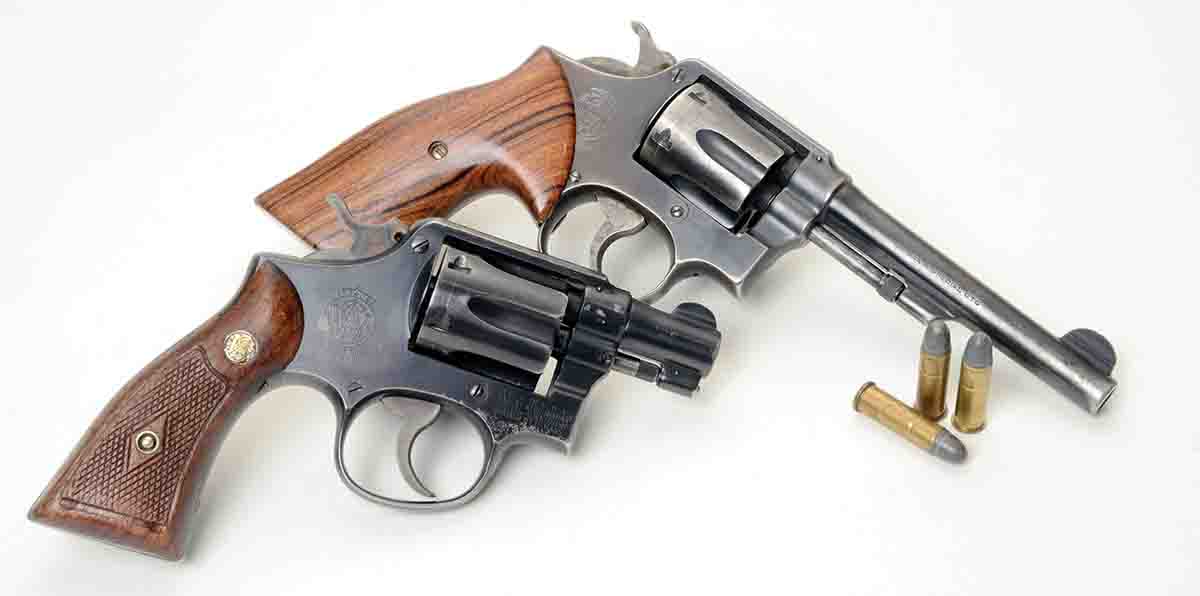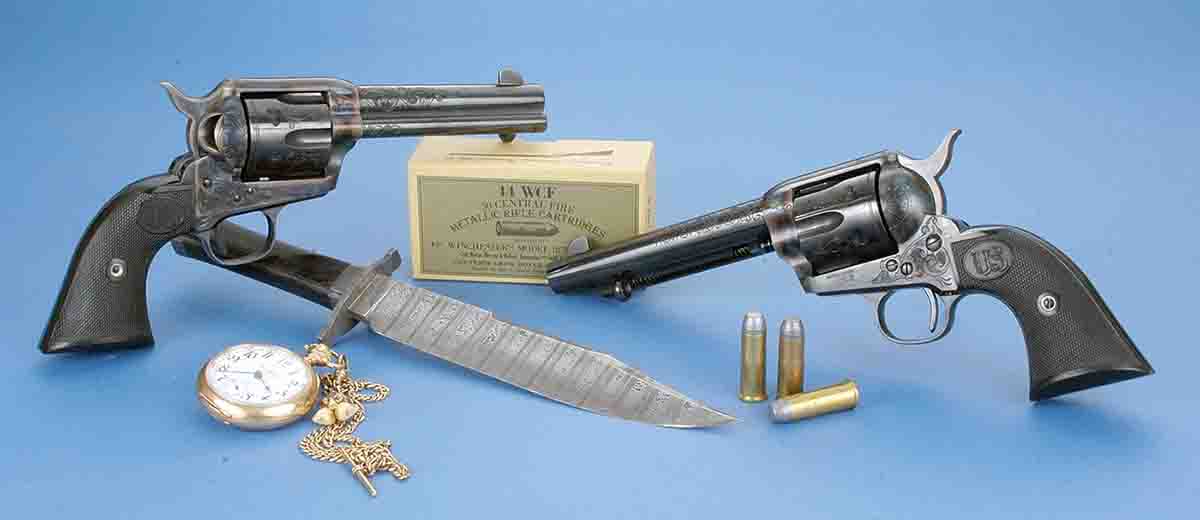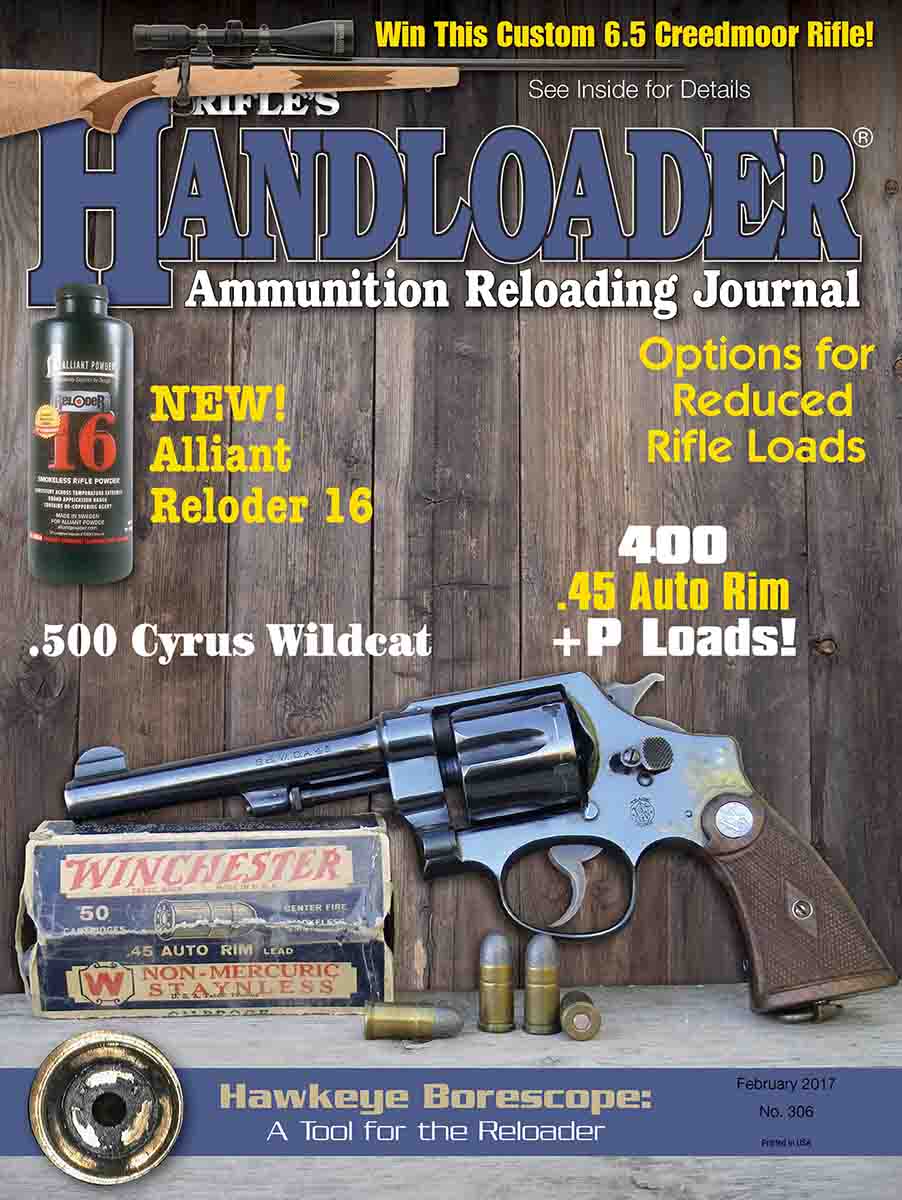Mike's Shootin' Shack
50 Years of Favorites
column By: Mike Venturino | February, 17
This past December marked my 50th year as a handloader. It started when, for Christmas 1966, my parents gave me a Lyman All American turret press with proper accouterments for loading .38 Special. I was completely hooked from the very first round. During those five decades, I’ve reloaded for more than 125 cartridges and still have die sets for 65 on my bench. All get used to one degree or the other. In bullet diameter my reloading has ranged from .17 Remington to .50-90 Sharps in rifles and .30 Luger to .455 Webley in handguns. Most all “Old West” cartridges for rifles and revolvers have been tried. My reloading tools have ranged from several Lyman 310 “nutcracker” sets to a Dillion 650 Progressive Press.
Often I’ve been asked to name favorite cartridges. It is a complicated question, because “favorites” come and go along with life’s twists and turns. In the beginning, my favorite was .38 Special, because my only centerfire gun was a Smith & Wesson K38. Thousands of rounds were loaded and fired in it during those teenage days while focusing on learning how to shoot a handgun accurately.
While living in my native West Virginia and attending college, more tooling was added for several handgun calibers and even .30-06 and .45-70. Then I moved to Montana where rifle shooting became far more important to me. Falling in with co-workers who liked to shoot varmints, such as gophers (ground squirrels) and rockchucks, I joined that activity passionately. Through the 1970s, virtually every varmint rifle cartridge between .17 Remington to .25-06 Remington was tried.

Simultaneously with varmint shooting, big-game hunting is almost compulsive for Montana shooters. Again a large variety of rifles and cartridges were used. They varied from 6mm Remington to .300 Winchester Magnum. Targeted game consisted of pronghorn, mule deer and elk.
When all was said and done in regard to hunting, I kept a Model 700 .222 Remington Magnum and a Model 70 .308 Winchester. Also favored was a Model 54 .257 Roberts, but it was given to a friend’s son upon his reaching hunting age. Neither the .222 Remington Magnum nor the .308 has been fired in several years.
Starting in 1984 and going on for about 20 years, Yvonne and I participated in cowboy action competition. It was great fun. I got to shoot “Old West” guns to my heart’s content, and as a fine seamstress, Yvonne enjoyed making fancy clothes for us. Our favorite cartridge was .44 WCF (.44-40), although for a couple of seasons I switched Yvonne to .38 Specials. She had developed a flinch and that was the temporary cure. We still have all our .44-40s, but physical problems have caused us to drop out of the sport.
The year after being introduced to the cowboy action game, the NRA began developing a very interesting new sport. It was called Black Powder Cartridge Rifle Silhouette, and I fired in the first relay of the very first experimental match held near Raton, New Mexico. The event was an avid handloader’s dream – loading black powder with lead alloy bullets and striving for precision grouping out to 500 meters. By 1987 BPCR Silhouette had moved from experimental status to become
an official NRA-sponsored sport. I have fired many tens of thousands of black-powder handloads in literally hundreds of BPCR Silhouette matches and during load development.
Cartridges tried have been .40-65, .40-70 Sharps Straight, .44-90 Straight, .45-70, .45-90 and .45-100. Competition rifles for those rounds collectively have been Winchester “high walls,” Remington “rolling blocks” and Sharps Model 1874s. With all this experience behind me, I must admit .45-70 is my favorite, with the .40-65 slightly behind. I have two fine .45-90s, one each built on original Sharps ’74 and Remington No. 1 actions with new barrels. Looking back, however, my top performances were mostly with .45-70s, but don’t ask me what my favorite .45-70 load is. That’s still a work in progress.

At the turn of the century, a lifelong interest in World War II history compelled me to begin building a collection of firearms used therein. Along with American guns, I accumulated British, German, Soviet, Japanese and a smattering of French, Italian, Finnish and Swedish firearms. Collectively there are rifles, carbines, sniper rifles, handguns and even some full-autos. Favorites get very complicated here. The 6.5x55mm Swedish rifles seem to be the most inherently accurate, but a couple of original 8x57mm German K98k sniper rifles handle cast bullets superbly. With that said, I do like my ’03 and ’03A3 rifles – of course, chambered for .30-06. Among handguns, a Belgian P35 “high power” 9mm is most pleasant to shoot, although I seem to hit better with a Colt 1911 made in 1918. It seems more 9mm Luger rounds get fired mainly because I favor the German MP40 sub-machine gun over the other full-autos. I’ve also loaded a bundle of 7.7x58mm Japanese cartridges since buying a Type 99 “Nambu” light machine gun.
Perhaps after 50 years, it’s not favoritism that counts so much as the fact that I’ve never gotten tired of pumping reloading press handles.


